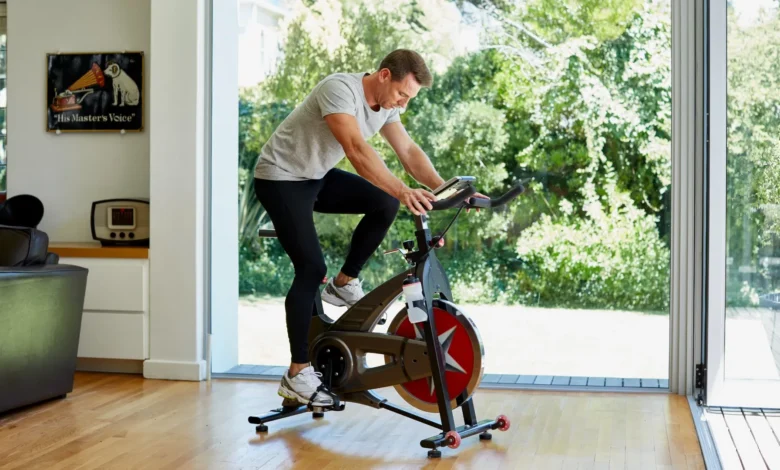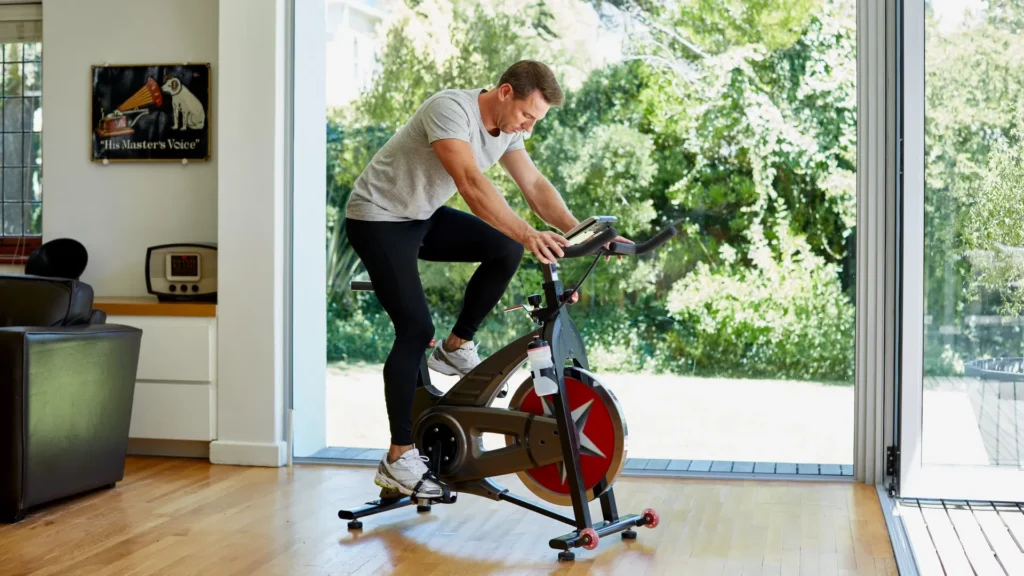Why More Americans Are Choosing Bikes for Fitness


In the bustling streets and serene countryside alike, there’s a growing trend among Americans: choosing bicycles as their go-to fitness tool. From urban commuters to avid outdoor enthusiasts, more and more individuals are embracing cycling as a means to improve their physical health and overall well-being. This shift towards pedal-powered fitness is not merely a fad but a significant movement that reflects evolving attitudes towards exercise, sustainability, and community engagement.
One of the primary reasons behind the surge in bike adoption for fitness is the myriad of health benefits it offers. Cycling provides a low-impact cardiovascular workout that strengthens the heart, improves circulation, and enhances overall cardiovascular health. Additionally, it’s an excellent way to build muscle strength, particularly in the legs, while also toning the core and upper body through proper posture and control. By regularly incorporating cycling into their routines, individuals can effectively manage weight, reduce the risk of chronic diseases such as diabetes and hypertension, and boost their immune system. In today’s fast-paced world, finding time for exercise can be a challenge. However, cycling offers a convenient solution that fits seamlessly into busy lifestyles.
Unlike traditional gym workouts that require dedicated time slots and specific locations, biking allows individuals to integrate physical activity into their daily routines. Whether it’s commuting to work, running errands, or simply exploring the neighborhood, cycling offers a practical way to stay active without the constraints of a fixed schedule. This flexibility appeals to many Americans who are looking for efficient ways to prioritize their health amidst their hectic schedules.
Beyond its fitness benefits, cycling also provides an opportunity for individuals to connect with nature and explore the great outdoors. From scenic trails winding through forests and mountains to coastal routes with breathtaking ocean views, the options for outdoor cycling adventures are endless. This aspect of biking appeals to those who seek adventure, tranquility, and a break from the confines of indoor exercise spaces. Whether it’s solo rides for introspection or group outings with friends and family, cycling fosters a sense of exploration and appreciation for the natural world.
In an era marked by increasing environmental awareness, many Americans are turning to biking as a sustainable mode of transportation. By opting for pedal power over gasoline, cyclists reduce their carbon footprint and contribute to efforts aimed at combating climate change. Moreover, the rise of electric bicycles (e-bikes) offers an eco-friendly alternative to traditional vehicles, further promoting sustainability in urban mobility. As more cities invest in bike-friendly infrastructure and initiatives to promote cycling, the appeal of environmentally conscious transportation continues to grow among individuals seeking to align their lifestyle choices with their values.
Cycling is not just a solo activity; it’s also a social endeavor that fosters connections and camaraderie among enthusiasts. Across the country, cycling clubs, group rides, and charity events provide opportunities for individuals to bond over their shared passion for biking. These communities offer support, encouragement, and a sense of belonging, making the fitness journey more enjoyable and sustainable. Whether it’s participating in charity rides for a cause or joining a local cycling group for weekly outings, cyclists find fulfillment in the relationships they form and the sense of community they cultivate through their shared love of biking.
While the benefits of cycling for fitness are undeniable, it’s essential to address concerns regarding safety, particularly in urban environments. Accidents involving cyclists and motor vehicles remain a significant risk, prompting calls for improved infrastructure, education, and awareness to ensure the safety of riders. Investing in bike lanes, traffic calming measures, and cyclist-friendly urban planning can help create safer environments for cyclists and encourage more individuals to embrace biking as a mode of transportation and fitness. Additionally, initiatives aimed at promoting helmet use, obeying traffic laws, and practicing defensive cycling can empower cyclists to navigate roads with confidence and reduce the likelihood of accidents.
As the momentum behind biking for fitness continues to build, it’s evident that cycling has become more than just a recreational activity—it’s a lifestyle choice with profound implications for personal health, environmental sustainability, and community well-being. With advancements in bike technology, urban planning, and public health initiatives, the future of cycling looks promising as more Americans recognize the transformative power of two wheels.
Whether it’s pedaling to work, exploring scenic trails, or joining group rides with friends, cycling offers a versatile and accessible way to stay active, connected, and engaged in the pursuit of a healthier nation. By embracing the bicycle as a tool for fitness and adventure, individuals across the country are pedaling towards a brighter, healthier future—one revolution at a time.




